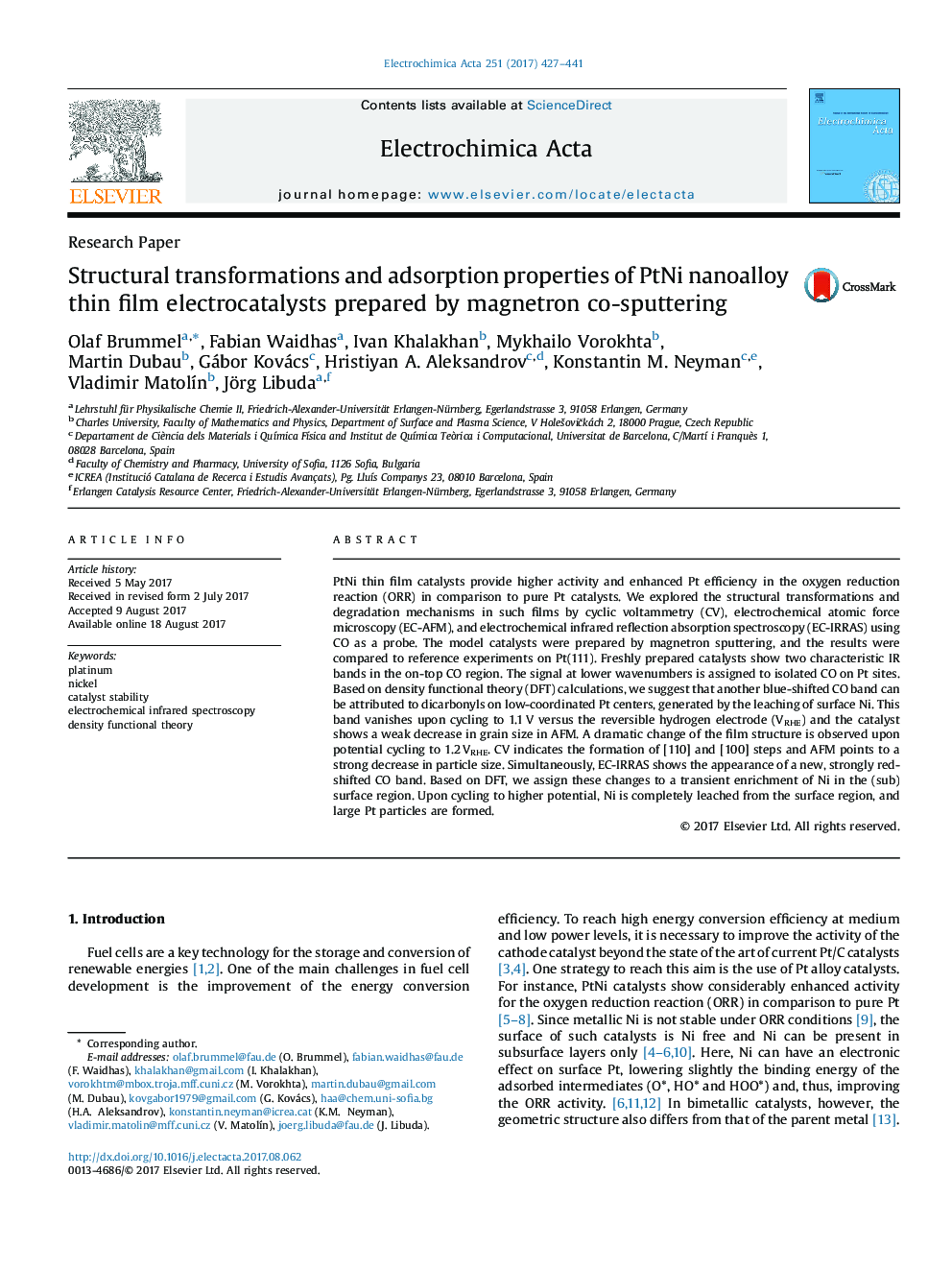| Article ID | Journal | Published Year | Pages | File Type |
|---|---|---|---|---|
| 6469943 | Electrochimica Acta | 2017 | 15 Pages |
PtNi thin film catalysts provide higher activity and enhanced Pt efficiency in the oxygen reduction reaction (ORR) in comparison to pure Pt catalysts. We explored the structural transformations and degradation mechanisms in such films by cyclic voltammetry (CV), electrochemical atomic force microscopy (EC-AFM), and electrochemical infrared reflection absorption spectroscopy (EC-IRRAS) using CO as a probe. The model catalysts were prepared by magnetron sputtering, and the results were compared to reference experiments on Pt(111). Freshly prepared catalysts show two characteristic IR bands in the on-top CO region. The signal at lower wavenumbers is assigned to isolated CO on Pt sites. Based on density functional theory (DFT) calculations, we suggest that another blue-shifted CO band can be attributed to dicarbonyls on low-coordinated Pt centers, generated by the leaching of surface Ni. This band vanishes upon cycling to 1.1Â V versus the reversible hydrogen electrode (VRHE) and the catalyst shows a weak decrease in grain size in AFM. A dramatic change of the film structure is observed upon potential cycling to 1.2Â VRHE. CV indicates the formation of [110] and [100] steps and AFM points to a strong decrease in particle size. Simultaneously, EC-IRRAS shows the appearance of a new, strongly red-shifted CO band. Based on DFT, we assign these changes to a transient enrichment of Ni in the (sub)surface region. Upon cycling to higher potential, Ni is completely leached from the surface region, and large Pt particles are formed.
Graphical abstractDownload high-res image (158KB)Download full-size image
